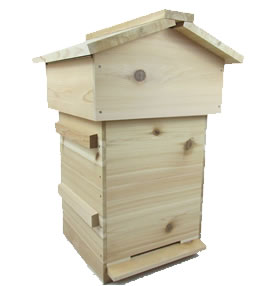How to Take Honey from Beehive: A Comprehensive Guide
Taking honey from a beehive is a delicate process that requires careful planning, proper equipment, and respect for the bees' natural habitat. Beekeepers must follow specific steps to ensure the safety of both the bees and the quality of the harvested honey.
Step 1: Preparation
Before harvesting honey, beekeepers should prepare the necessary equipment, including a beekeeping suit, smoker, hive tool, bee brush, honey extractor, and storage containers. It's essential to choose a sunny, warm day when bees are most active and less likely to become agitated.
Step 2: Smoke the Hive
Using a bee smoker, gently puff smoke into the hive entrance and around the hive to calm the bees and reduce their defensive response. This helps minimize disruption and makes it safer for the beekeeper to work around the hive.
Step 3: Remove the Honey Supers
Once the bees have calmed down, carefully remove the honey supers from the hive using a hive tool. Honey supers are hive boxes specifically designated for honey storage and are usually located on top of the brood boxes.
Step 4: Brush off Bees
Before extracting honey, gently brush off any bees clinging to the frames using a bee brush. Be careful not to crush or harm the bees during this process, as they play a vital role in the hive's ecosystem.
Step 5: Extract Honey
Take the honey supers to a designated honey extraction area equipped with a honey extractor. Uncap the honeycomb using a capping scratcher or knife, then place the frames into the extractor. Spin the extractor to extract honey from the frames.
Step 6: Filter and Store Honey
After extracting honey, filter it through a fine mesh or cheesecloth to remove any impurities or debris. Transfer the filtered honey into clean, airtight containers, such as jars or buckets, and store them in a cool, dark place until ready for consumption or sale.
Step 7: Return Honey Supers to Hive
Once honey has been harvested, return the empty honey supers to the hive to allow bees to clean up any remaining honey and wax. This helps maintain hive hygiene and ensures bees have ample storage space for future honey production.
Conclusion
Harvesting honey from a beehive is a rewarding experience that requires careful planning, attention to detail, and respect for the bees' natural habitat. By following the steps outlined above and practicing good beekeeping techniques, beekeepers can safely and responsibly extract honey while maintaining the health and well-being of their bee colonies.
Remember, bees play a vital role in pollination and ecosystem health, so it's essential to approach beekeeping with care, compassion, and a deep understanding of these remarkable creatures.



